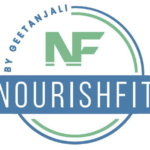Table of Contents
Toggle5 Powerful Tips for a Sustainable Diet: Achieve Health and Wellness
How to Know if Your on a Sustainable Diet
A “sustainable diet” promotes all dimensions of an individual’s health and well-being. Sustainable diets are nutritionally adequate, accessible, affordable, safe, culturally acceptable, and have a low impact on the environment and food supply, now and in the future. Here are five powerful tips for ensuring your diet is sustainable:

1. Prioritize More Plant-Based Meals and Less Animal-Based Foods
A dietary pattern that includes whole grains, legumes, beans, nuts, seeds, and abundant vegetables and fruits is a great step towards a sustainable diet. Plant-based proteins like beans and legumes are more environmentally friendly, require fewer resources, and have a lower environmental impact compared to meat and animal products.
However, you don’t have to completely give up animal-based foods. Include a small or moderate amount of seafood or poultry, and reduce the quantity of red meat. Diets high in plant-based foods have also been linked to a decreased risk of hypertension, stroke, type 2 diabetes, and certain cancers.
2. Replace Highly Processed Foods with Real Whole Foods
We should restrict the consumption of ultra-processed foods and over-the-counter junk foods available in plastic containers and packets. These foods are chemically processed, have low nutritional value, and are high in sugar, salt, trans fats, and artificial additives. Although they tend to taste good and are often inexpensive, consuming them in excess can be harmful. Examples include frozen or ready meals, bakery items and pastries, packaged bread, processed cheese products, breakfast cereals, crackers and chips, candy and ice cream, instant noodles and soups, reconstituted meats like sausages, nuggets, fish fingers, and processed ham, sodas, and other sweetened drinks.
In recent decades, ultra-processed foods have become common in diets worldwide. However, eating large amounts of these foods increases health risks.

3. Look Local and Seasonal
Focusing on eating local and seasonal foods from your area is crucial. These foods are fresher and higher in nutritional value since they are not imported from distant states or countries. Remember, the farther the food item travels to reach you, the lower its nutritional value.
Eating local and seasonal respects local culture, culinary practices, knowledge, and consumption patterns. It also benefits the local economy, including supporting local farmers and other producers. Local consumption is a principle encouraged by ancient medicinal systems, which improve physical fitness and mental well-being.
4. Eat Mindfully
One of the simplest things you can do to eat more sustainably is to practice mindful eating. Focusing on what you’re eating allows you to reflect on where your food came from and how it is nourishing your body. By paying attention to how we eat, we can alter our food consumption, reduce food waste, and become encouraged to seek more sustainable food sources.

5. Balance and Simplicity
When starting a new eating pattern or lifestyle change, it’s crucial to ask yourself if you can sustain it for a long period. This sustainability test is essential. Remember, if your diet focuses on only one food group (e.g., salads, eggs, green teas) or includes strange-looking and tasting green juices or detox concoctions, it is likely not sustainable. Balance and simplicity are key. We need a balance of all food groups to provide the necessary macro and micronutrients required for the efficient functioning of our bodies.
Did You Know?
A sustainable healthy diet starts early in life with the early initiation of breastfeeding, exclusive breastfeeding until six months of age, and continued breastfeeding until two years and beyond, combined with appropriate complementary feeding.
By following these tips, you can ensure your diet is sustainable, promoting health and well-being while also being kind to the environment.
For more insights and detailed guides on sustainable diets, visit Nourish Fit.




